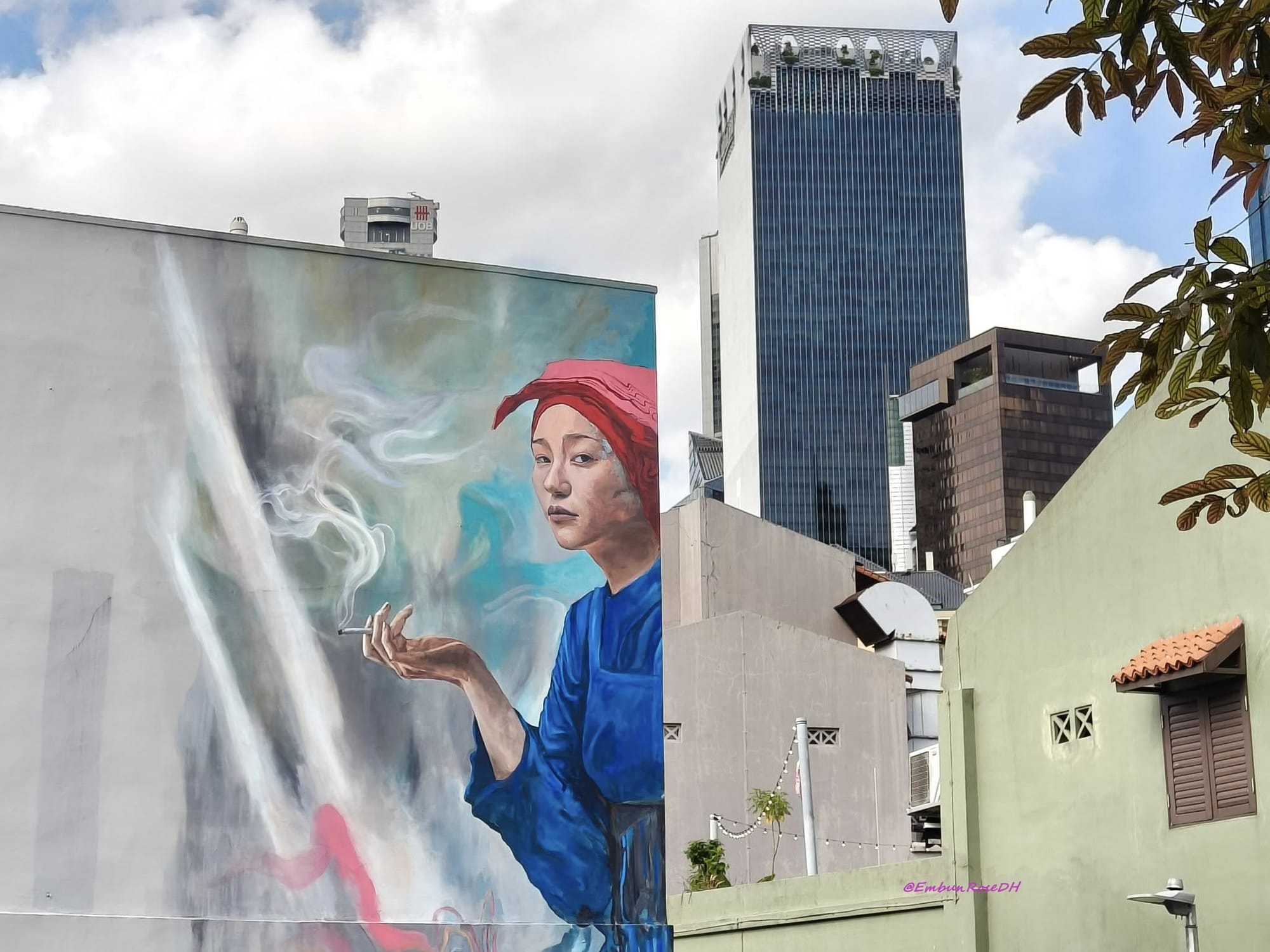The tireless shoulders: history, poverty and resilience of Samsui women (三水妇女).

Introduction
Samsui women represent an iconic figure of the Chinese diaspora in Southeast Asia, particularly in Singapore and Malaysia. Their history, marked by migration, poverty, and back-breaking labour in the construction industry, bears witness to exceptional resilience and strength of character. These tireless workers not only contributed significantly to the urban development of these nations, but their journey also offers a poignant insight into the socio-economic realities and gender dynamics of their time.
The Forgotten Hardship
Their story has its roots in the Samsui region, located in Guangdong province, Southern China. In the early 20th century, China was plagued by political instability, natural disasters, and endemic poverty. Faced with these hardships, many men and women embarked on a perilous journey to the British colonies of Southeast Asia, seeking better economic opportunities. Samsui women, recognisable by their distinctive red headscarves, often migrated alone or in groups, driven by the need to support families back home or to escape a life of destitution. Their decision to leave their homes to face an uncertain future in a foreign land demonstrates remarkable courage and determination.
The reality that awaited these migrants was far from idyllic. They primarily engaged in the construction sector, a traditionally male and physically demanding field. Dressed in their sturdy blue blouses and black trousers, and sporting their emblematic hong tou jin (red headscarf) which protected them from the sun and dust, they participated in the building of Singapore and Kuala Lumpur's infrastructure. They carried bricks, mixed cement, and transported heavy materials, working relentlessly in a gruelling tropical climate. Poverty was a constant companion. Their wages were often meagre, barely sufficient for their own sustenance and sending small sums back to their families.They lived in rudimentary conditions, often in overcrowded and unsanitary housing near the construction sites. The precariousness of their existence made them vulnerable to exploitation and disease. In this context of incessant toil and deprivation, marriage for Samsui women was often a complex prospect.
Many had left husbands or families in China, intending to return once a degree of financial stability was achieved. However, the harshness of life and low incomes often made this return an illusion. Some chose never to marry, dedicating themselves entirely to their work and sending money to their relatives. For those who did marry in Southeast Asia, it was often to other migrants, sharing similar living conditions. Marriage did not always bring a reduction in workload, as they often continued to work hard to support the household.Amidst this austere and demanding existence, there were rare moments of respite, small breaks that offered a breath of fresh air in their exhausting daily lives.
One such seemingly insignificant break was their cigarette break. This moment, often shared among colleagues, represented far more than a simple physiological pause. It was an instant of camaraderie, an interlude where tired bodies could relax for a moment, where tongues could loosen, and where the worries of work briefly faded into the smoke. For these women who lived under the constant weight of labour and poverty, this short cigarette break was a precious moment of freedom, a space where they could exert a semblance of control over their time and share a moment of humanity with their peers.
In conclusion, the history of Samsui women is a poignant testament to migration, poverty, and the strength of the human spirit. Originating from a rural region of China, they braved hardship to seek a better life in Southeast Asia, contributing indelibly to the urban landscape of Singapore and Kuala Lumpur through their tireless labour in the construction sector. Despite the brutal reality of their poverty and the complexities of marriage, they found small moments of comfort and freedom in their difficult daily lives, exemplified by their cigarette break. Their legacy endures as a symbol of resilience, determination, and the silent yet essential contribution of migrant women to the development of nations.
Embun DH.
References:
"Remembering the Samsui Women: Migration and Social Memory in Singapore and China" by Kelvin E.Y. Low (2015): This book explores the lives and legacy of Samsui women, examining both media and state representations, as well as the oral histories of the women themselves. It highlights issues of identity, public construction and self-definition, and explores the reasons for their difficult migration. It also analyses the way they are commemorated in Singapore and China.
"Hong Tou Jin Samsui Women of Singapore" by Pinky Toky (2012): Although shorter, this e-book offers an overview of the history of Samsui women who emigrated from the Samsui region in China to work in Singapore, primarily in the construction sector. It explains how they became known as "Hong Tou Jin" due to their distinctive red headscarves.
"Adventures Of Samsui Girl" by Ho Lee-Ling (2024): Initially published in two books ("Samsui Girl" and "Wayang Girl"), this special edition for young readers tells the story of Samsui women through the eyes of a young girl exploring different aspects of Singapore's history. It also includes information sections about Samsui women in Singapore.
